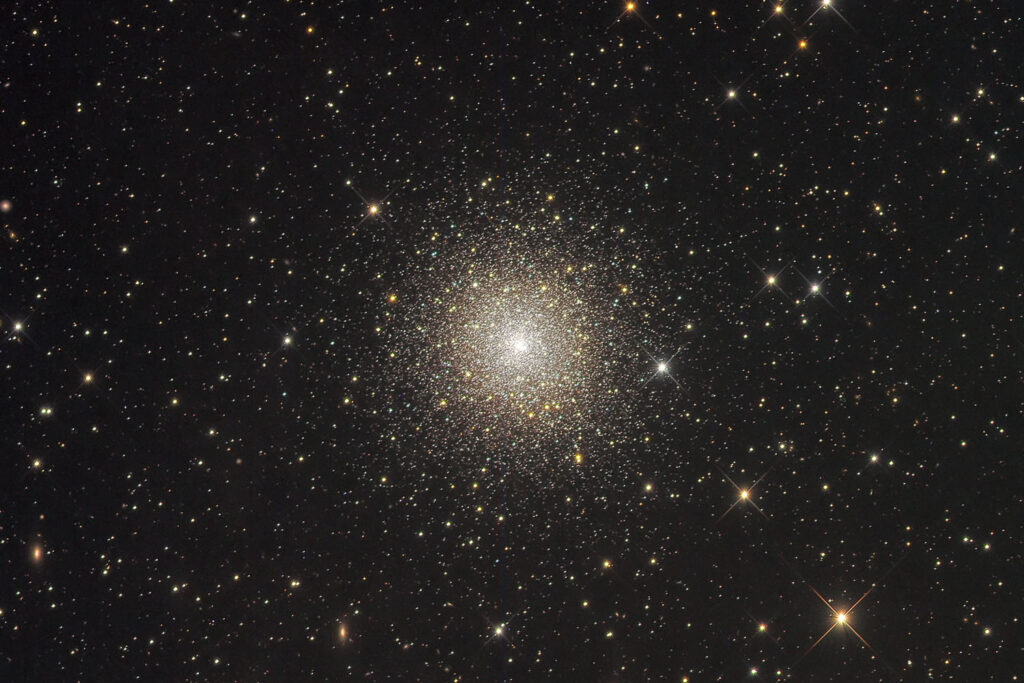Messier 92
Globular Cluster, Hercules
- Description
- Technical
- Links
Messier 92 (also known as M92, M 92, or NGC 6341) is a globular cluster of stars in the northern constellation of Hercules. It was discovered by Johann Elert Bode in 1777, then published in the Jahrbuch during 1779. It was inadvertently rediscovered by Charles Messier in 1781 and added as the 92nd entry in his catalogue. It is about 26,700 light-years away from the solar system.
It is one of the brighter of its sort in apparent magnitude in the northern hemisphere and in its absolute magnitude in the galaxy, but it is often overlooked by amateur astronomers due to angular proximity to dazzling cluster Messier 13, about 20% closer. It is visible to the naked eye under very good conditions.
It is also one of the galaxy’s oldest clusters. It is around 16×103 ly (4.9 kpc) above/below the galactic plane and 33×103 ly (10 kpc) from the Galactic Center. The half-light radius, or radius containing the upper half of its light emission, is 1.09 arcminutes (′), while the tidal radius, the broadest standard measure, is 15.17′. It appears only slightly flattened: its minor axis is about 89% ± 3% of the major.
Characteristic of other globulars, it has little of the elements other than hydrogen and helium; astronomers term this low metallicity. Specifically, relative to the Sun, its iron abundance is [Fe/H] = –2.32 dex, which is 0.5% of 1.0, on this logarithmic scale, the solar abundance. This puts the estimated age range for the cluster at 11 ± 1.5 billion years.
The cluster is not yet in, nor guaranteed to undergo, core collapse and the core radius figures as about 2 arcseconds (″). It is an Oosterhoff type II (OoII) globular cluster, which means it belongs to the group of metal-poor clusters with longer period RR Lyrae variable stars. The 1997 Catalogue of Variable Stars in Globular Clusters listed 28 candidate variable stars in the cluster, although only 20 have been confirmed. As of 2001, there are 17 known RR Lyrae variables in Messier 92. 10 X-ray sources have been detected within the 1.02 arcminute half-mass radius of the cluster, of which half are candidate cataclysmic variable stars.
Telescope: ASA N16 f3.6
Mount: Astro Physics 3600GTO “El Capitan”
Camera: SBIG STL-11000M
Guider: SBIG STL-Internal
L: 15×2 mins = 30 mins, R: 15×2 mins = 30 mins, G: 15×2 mins = 30 mins, B: 15×2 mins = 30 mins
Total Imaging Time: 2h 00m
Data Imaged remotely over 2 nights during June 2012.
Data acquisition & Processing by David Churchill.
None

